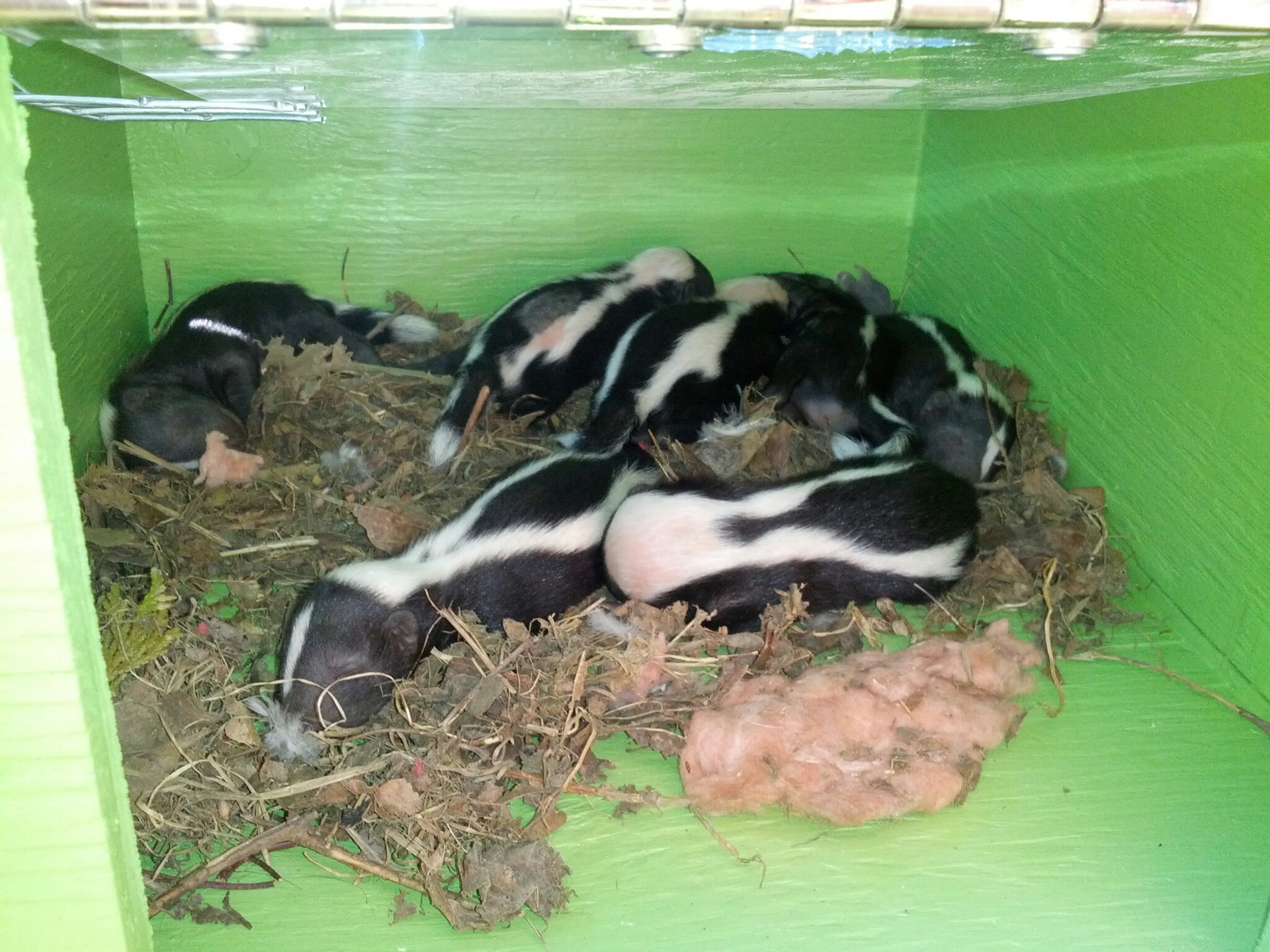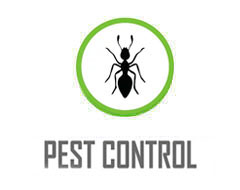
Need help today? Don't wait
> FIND A LOCATIONSkunks
WHAT WE DO FOR YOU
The striped skunk is a mammal that is infamous for the strong odor it can emit. That odor, when targeted toward a pet or released under your deck or porch, is a major headache that can take weeks to dissipate. Although skunks are not aggressive animals, they seem to be aware of their own odorous potential, as they are careful not to spray on themselves when targeting a threat. Because distinguishing healthy skunks from those infected with rabies is difficult, professional removal is always necessary. We understand skunk behaviour, and the trouble they can cause on your property depending on the time of year and situation.
WHAT WE DO FOR YOU
When skunks make their home on your property it can quickly become an unsafe and uncomfortable situation. Skunks are powerful and determined when it comes to digging and easily burrow below decks, porches and sheds. During their stay, skunks may spray unsuspecting pets or family members, leaving behind a lingering smell that can seep into your home and hang around for weeks.
Accessing skunk dens without being sprayed is only one part of the skunk removal process. Preventing them, and other skunks, from returning is an important step that usually requires installing a barrier to keep them out. Ensuring skunks can’t dig back in means burying a heavy gauge steel mesh into the ground and digging up hundreds of pounds of soil. Our friendly technicians handle the heavy lifting for you, securing a screen 8-12 inches deep into the ground around your deck, shed or porch that no skunk can dig or chew through. All screens are installed in an aesthetically pleasing way, using professional techniques, to make it appear as though we were never there. Best of all, once installed, you no longer have to worry about the current skunk occupant from making its way back in but you’re also protected from all the other skunks in the neighbourhood looking to make your deck, shed or porch their home in the future.
With over 30 years of experience, Skedaddle technicians understand the seasonal and behavioural patterns of skunks, which allows us to safely complete a humane and spray-free removal. While skunk entry points are often easy to spot, identifying all potential future points of entry requires a trained eye. When you hire professionals to remove skunks you reduce unpleasant interactions, property damage, and prevent future skunk problems.
WHY YOU NEED SKUNK REMOVAL SERVICES
When baby skunks are present on your property the removal process becomes more complicated. Litters of skunk babies arrive between May and June and are completely dependent on their mothers for the first couple of months after birth. During this time, the only way to remove them from below a deck, shed or porch is by hand, and they are often hidden in hard-to-reach areas under the structure. Mother skunks can be extremely defensive and are prone to spray if threatened during removal. Skedaddle’s technicians are trained to safely locate and remove skunk babies, often with the help of thermal imaging cameras. The babies are then placed in our heated baby reunion boxes where they wait for their mother to relocate them to another den site in the area.
The longer skunks are left under a structure the more likely it is they will spray. In close proximity and with the chance to leach into building materials it can get pretty unpleasant for homeowners. During the winter time when the soil is frozen solid and skunks are hibernating in their dens, removals are particularly difficult. Female skunks often use their winter den site into the months of spring to birth and raise their babies. The best time to remove skunks is before they have the chance to settle in for a long winter.

Skunks Searching for Shelter This Fall
Autumn is a busy season for skunks, and their unmistakable odor often gives away their presence. As temperatures cool, they focus on finding reliable food sources and securing a warm den to survive the winter. Rather than hibernating fully, skunks enter a state of torpor—a period of deep rest that allows them to conserve energy until spring. Unlike climbers such as raccoons or squirrels, skunks prefer to burrow, often settling beneath decks, sheds, and other protected areas around your property.
Once winter arrives, skunks may remain dormant for weeks at a time, only venturing out occasionally to forage. This behavior makes it much harder to remove them during the colder months, which is why fall is the best time to act. Homeowners should carefully inspect outdoor spaces—yards, patios, and outbuildings—for signs of skunk activity before the ground freezes. Addressing den sites early helps prevent more serious problems, including the challenges of mating season in the spring.
To keep your property protected, book a fall inspection with Skedaddle Humane Wildlife Control. Our trained technicians safely and humanely remove skunks, clean affected areas, and seal off entry points to prevent future issues. Trust Skedaddle to keep your home and yard skunk-free this fall and beyond.
Our wildlife technicians are trained to identify skunk entry points, which due to their excellent ability to dig, are often found below porches, decks and sheds. Accessing a skunk’s den can often be difficult. Once we have a complete understanding of the situation and the location of the skunks, our technicians will explain their findings and walk you through each step of the process.Using specialized, hands-on removal techniques our technicians will gently place any baby skunks inside a heated baby box so that they can be safely relocated by their mother to one of her multiple den sites. One-way doors are often used to allow any adult skunks to exit for food while preventing their return.
Why are Skunks on my Property?
Why You Need Experts To Properly Get Rid Of Skunks?
How to Keep Skunks Out During the Summer?
Skedaddle Humane Wildlife Control’s wildlife removal strategy is humane, safe and reliable. Part of our process involves clearing and cleaning any contaminated or soiled material as well as droppings that could be left behind . Your Wildlife Technician will advise you of any cleaning and clearing that may be required depending on the severity of contamination. This will help ensure that your home remains safe for you and your family. Any droppings and contaminated materials will be removed with care to prevent spreading bacteria throughout the home.
How to Remove Skunk Odor From Pets?
What do Skunk Dens Look Like?
The last part of our process involves taking specific measures designed to prevent future skunk intrusions. Your Skedaddle wildlife technician will not only seal the entry point after removal, but will also protect against re-entry by burying a heavy gauge screen deep into the ground surrounding the structure. This high quality screen is designed to stand the test of time and prevent skunks, any certain other types of wildlife, from digging their way back under.Skedaddle Humane Wildlife Control then deodorizes the surrounding areas to deter other skunks from making your deck, porch or shed their home. Our Wildlife Technicians specialize in ensuring that your home and family are protected as part of the Skedaddle Humane Wildlife Control customer service experience.
Skunk Prevention and Animal Control Advice
How To Prepare For Skunk Season?
How to Stop Skunks From Living on Your Property?
Common Skunk Questions
HOW DO I KNOW WHERE SKUNKS ARE LIVING ON MY PROPERTY?
In residential areas skunks burrow below foundationless structures to create their den sites. Decks, sheds, porches, and floating additions often provide the perfect shelter. Skunks will leave piles of dirt and holes along the edge of a structure as a tell-tale sign of their entry. During the spring and summer, skunks and their babies feed on our gardens and the grubs found in lawns. Look for small holes in your grass or garden as possible indicators of skunk activity.
CAN SKUNKS CLIMB?
Skunks are not climbers, instead they are one of nature’s best diggers. Using their strong paws and sharp claws, skunks will dig up hundreds of pounds of dirt to create a single den site. The cavities below sheds, decks, porches and home additions, provide skunks with an opportunity to make their home on your property.
DO SKUNKS HIBERNATE?
Skunks do not hibernate, instead they go through long periods of inactivity and rest inside the den sites they created in the fall. Our decks, sheds, and porches provide shelter from the cold that allow skunks to survive until spring. During mild spells skunks will only occasionally emerge from their dens in search of food or water, which is why fall removal is always the best course of action.
ARE SKUNKS NOCTURNAL?
Skunks are nocturnal animals, however, it is not uncommon to see them out and about through the day. Spotting a skunk out during the day does not necessarily mean it is sick. During the spring and summer months, when mothers are teaching their young to find food and shelter, you can often spot skunks outside of their dens during daylight hours.
HOW CAN I REMOVE SKUNK ODOR?
There are several over the counter products that help reduce the odor from skunk spray. For a DIY solution, mix distilled vinegar, concentrated liquid dish detergent and water into a spray bottle to help remove the odor from surfaces. If your pet has been sprayed, mix one quart of 3% hydrogen peroxide, 1⁄4 cup of baking soda and one teaspoon of liquid detergent into a solution. Rub the solution into their fur thoroughly. After sitting for 20 minutes, rinse the solution, ensuring that their eyes are kept dry. The best way to prevent you or your dog from being sprayed is to remove skunks that have taken up residence.
WHEN DO SKUNKS HAVE BABIES?
Female skunks give birth in late spring, between May and June. Litters commonly consist of four to seven babies, who are born blind, deaf and completely dependent on their mother. At six weeks, kits begin to leave the den, staying with their mother until the fall. During this time, skunk babies must be removed from a den site by hand, which can make each removal more complex.
CALL US TODAY
1.888.592.0387
OR
Request for Services







